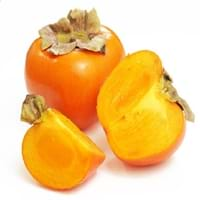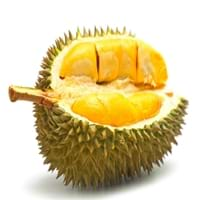Health Benefits
Anti-oxidant properties, Beneficial in curing fever, Cancer prevention, Heart care, Reduces nervous tension
Anti depressant, Boosts immune system, Cancer prevention, Heart care, Reduces stress
General Benefits
Anti-inflammatory properties, Boosts immune system, Controls blood pressure, Digestive aid, Eye care, Fights against infections, Helps in weight loss, Improves blood circulation
Anti oxidant properties, Anti-inflammatory properties, Boosts immune system, Controls blood pressure, Controls blood sugar levels, Digestive aid, Flu treatment, Strengthens bones
Skin Benefits
Anti-aging benefits, Brightens and lightens complexion, Reduces wrinkles
Anti-aging benefits, Brightens and lightens complexion
Hair Benefits
Good conditioner, Promotes longer and healthier hair, Treatment of dandruff
Promotes longer and healthier hair, Protects hair
Allergy Symptoms
Abdominal pains, Anaphylaxis, Inflammation
Diarrhea, Headaches, Hives, Nasal congestion, Red rash, Runny nose, Vomiting
Side Effects
Affects blood glucose levels, Decrease in blood sugar levels, Coagulation
Affects blood glucose levels, Nausea, Stomach pain
Best Time to Eat
Along with meal, As a snack in the late afternoon, Don't consume at night and before bed, Eat the fresh ones, avoid mixing with any other foods, don't eat after meal.
Along with meal, As a snack in the late afternoon, Don't consume at night and before bed, Morning time (before lunch)
Vitamin A (Retinol)
Not Available
Vitamin B1 (Thiamin)
Not Available
Vitamin B2 (Riboflavin)
Not Available
Vitamin B3 (Niacin)
Not Available
Vitamin B5 (Pantothenic Acid)
Not Available
Vitamin B6 (Pyridoxin)
Not Available
Vitamin B9 (Folic acid)
Not Available
Vitamin C (Ascorbic Acid)
Calories in Fresh Fruit with Peel
Not Available
Calories in Fresh Fruit without Peel
Not Available
Calories in Frozen Form
Not Available
Calories in Canned Form
Not Available
Not Available
Calories in Pie
Not Available
Type
Berry, Tree fruit
Tree fruit, Tropical
Season
Autumn, Winter
Monsoon
Varieties
Early Golden, John Rick, Miller, Woolbright and Ennis
D24, D99 (Gob kecil), D123 (Chanee), D145 (Beserah), D158 (Gan Yau), D159 (Monthong), D169 (Tok Litok), D188, D189, D190, D163 (Hor Lor) and D164 (Ang Bak)
Color
Orange, Red, Yellow
Green
Inside Color
Yellow
Yellow
Taste
Sweet
Creamy, Sweet
Origin
Eastern United States
South-Eastern Asia
Grows on
Trees
Not Available
Soil Type
Sandy loam, Well-drained
Clay
Climatic Conditions
Can tolerate wide range of climates, Sunny
Hot, Humid
Facts about
- It is said that formation of seeds inside the persimmon fruit shows what type of winter is coming(type of snow).
- There are about 2000 varieties of this fruit.
- The American persimmon has another name 'Possumwood'.
- 1 kg of durian contains 1350 calories which may cause weight gain.
- It may have a hyperthermic effect on the body, making you feel warmer.
- Study shows that durian has an ability to reduce infertility in men & women.
Top Producer
China
Thailand
Other Countries
Azerbaijan, Brazil, Costa Rica, Japan, Korea, Pakistan
Indonesia, Malaysia, Philippines
Top Importer
United States of America
China
Top Exporter
United States of America
Thailand
Botanical Name
Diospyros virginiana
Durio zibethinus
Synonym
Not Available
Lahia Hassk
Subkingdom
Tracheobionta
Tracheobionta
Division
Magnoliophyta
Magnoliophyta
Class
Magnoliopsida
Magnoliopsida
Subclass
Dillenhidae
Dillenhidae
Family
Ebenaceae
Malvaceae
Species
D. virginiana
D. zibethinus
Generic Group
Not Available
Not Available
Difference Between American Persimmon and Durian
We might think that American Persimmon and Durian are similar with respect to nutritional value and health benefits. But the nutrient content of both fruits is different. American Persimmon and Durian Facts such as their taste, shape, color, and size are also distinct. The difference between American Persimmon and Durian is explained here.
The amount of calories in 100 gm of fresh American Persimmon and Durian with peel is 127.00 kcal and Not Available and the amount of calories without peel is Not Available and 147.00 kcal respectively. Thus, American Persimmon and Durian belong to and category.These fruits might or might not differ with respect to their scientific classification. The order of American Persimmon and Durian is Ericales and Malvales respectively. American Persimmon belongs to Ebenaceae family and Durian belongs to Malvaceae family. American Persimmon belongs to Diospyros genus of D. virginiana species and Durian belongs to Durio genus of D. zibethinus species. Beings plants, both fruits belong to Plantae Kingdom.









